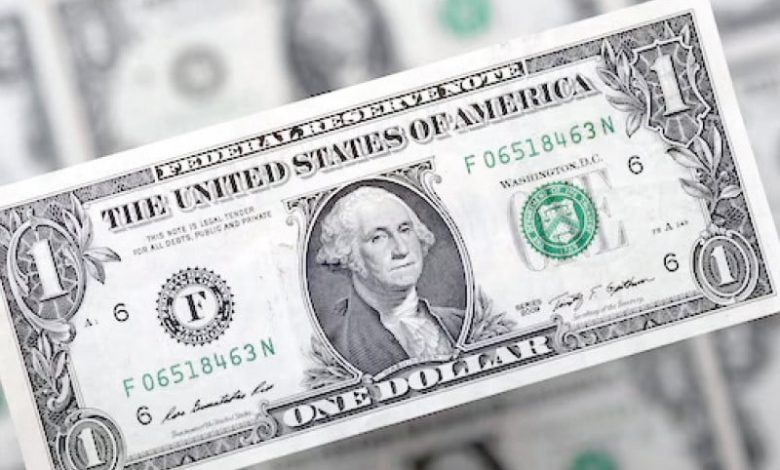The dawn of a multi-currency world?

The global financial system is on the brink of a major transformation, shifting from a US dollar-dominated regime to a multi-currency system involving the Chinese yuan, Russian ruble, Indian rupee, and other currencies. This shift, driven by geopolitical tensions and strategic economic policies, signals a significant move towards de-dollarisation.
Recently, the European Union (EU) announced plans to send interest earned on frozen Russian assets to Ukraine to fund its armament purchases. EU’s top diplomat Josep Borrell stated that the first tranche of interest accruing on some €300 billion (over $300 billion), amounting to €1.4 billion, will be transferred to Kiev in early August to address key military needs. This decision follows Euroclear’s, the Brussels-based depository and clearing house, confirmation to redirect interest generated from frozen Russian funds to Ukraine, provoking strong reactions from Russia.
Kremlin spokesman Dmitry Peskov labelled the act as “thievery” and warned of retaliation. He stressed that using these funds for military purposes against Russia violates international law and property rights.
Adding to the global financial shifts, on June 9 of this year, Saudi Arabia decided not to renew its petrodollar agreement with the US after 50 years – an agreement which had been in place since June 8, 1974. This agreement mandated the sale of Saudi oil exclusively in US dollars, thereby bolstering the dollar’s dominance. Saudi Arabia’s new stance allows it to sell oil in various currencies, reflecting a broader trend towards de-dollarisation.
The G7 leaders had initially planned to allocate the frozen Russian assets, approximately $300 billion, directly to Ukraine. However, Saudi Arabia’s veiled threat to withdraw its own significant assets from Europe and the US if this happened led to a compromise. Instead of transferring the principal amount, only the interest will be sent to Ukraine. This decision has stirred fears about the reliability of Western financial institutions, potentially prompting other nations to withdraw their investments.
China, for instance, has already reduced its holdings in US Treasury bills from $1.3 trillion to less than $780 billion, preferring to invest in gold. Similarly, Japan and Saudi Arabia are gradually divesting from dollar-denominated assets. A sudden large-scale withdrawal by these countries could destabilise the global financial system, depreciate the US dollar, and impact dollar-denominated assets.
This self-inflicted acceleration of de-dollarisation by the West poses significant risks. Investors and countries may lose confidence in Western financial institutions, leading to a massive withdrawal of funds and a subsequent economic downturn.
The Global South, led by China, is advancing towards de-dollarisation at a controlled pace. The US military power heavily relies on the dollar’s status as an international reserve currency, allowing unlimited dollar printing. The US is currently adding $1 trillion to its debt every quarter, primarily to fund its military engagements, such as the ongoing support for Ukraine.
Eminent economist Dr Asfaque Hasan Khan predicts that while a new BRICS – an intergovernmental organisation comprising Brazil, Russia, India, China, South Africa, Iran, Egypt, Ethiopia, and the United Arab Emirates – currency may not emerge in the next five years, the use of local currencies in trade will gain momentum. This Global South has already started showing preference for trading in their local currencies. Currently, 53% of Chinese trade is conducted in currencies other than the US dollar. China anticipates potential conflict with the US over Taiwan and is reducing its dollar-denominated assets to mitigate risks.
China’s efforts are part of a broader strategy to dethrone the US dollar. By 2030, China is expected to become the world’s largest economy, a status the West aims to delay but not prevent. The use of frozen assets or their interest to fund Ukraine’s military violates international norms and undermines trust in the global financial system. Americans reiterate the need for a rule-based dollar, meaning that the rules set by the US should be implemented globally.
The G7’s decision to use the interest from Russian assets for Ukraine was controversial even among its members. This wealth belongs to Russia and should be returned once geopolitical tensions ease. Middle Eastern countries, particularly Saudi Arabia, Dubai, and Qatar, were notably concerned about this decision, fearing similar actions against their assets in the future. Europe and the US, on the other hand, do not hold significant assets in cash or gold, relying instead on investments from other countries. Many Muslim countries, often under dictatorial regimes, face uncertainty as their rulers risk being overthrown and losing their wealth. As a result, they transfer much of their wealth out of their respective countries.
Leading analyst and researcher Professor Engineer Zamir Ahmed Awan highlights that the ruling elites and business leaders of countries like Pakistan have significant assets abroad. This practice ensures their wealth’s safety amid domestic political instability. Such trends underscore the distrust in local financial systems and the preference for securing wealth in more stable foreign economies.
Head of the Sustainable Development Policy Institute (SDPI), Abid Qaiyum Suleri notes that the dominance of the US dollar is being challenged by the growing use of local currencies in international trade. China is developing alternative clearing and messaging systems to CHIPS and SWIFT, facilitating cross-border settlements. Other countries, like India and Turkey, are also trading with Russia using local currencies. Pakistan, with its limited foreign reserves, is increasingly relying on barter trade and currency swaps to mitigate dollar-denominated debts.
Despite these efforts, significant challenges remain in reducing dollar hegemony. Emerging markets lack the institutional quality and capital market depth necessary to fully replace the dollar’s role. However, the gradual shift towards a bouquet of local currencies is undeniable.




